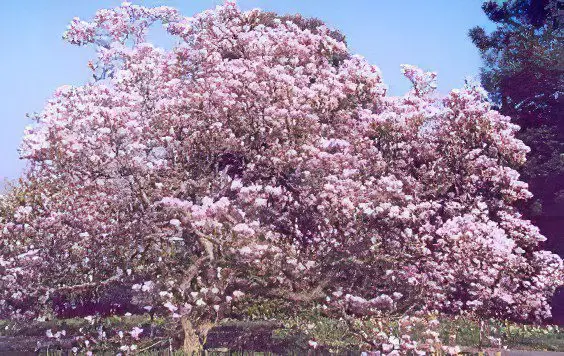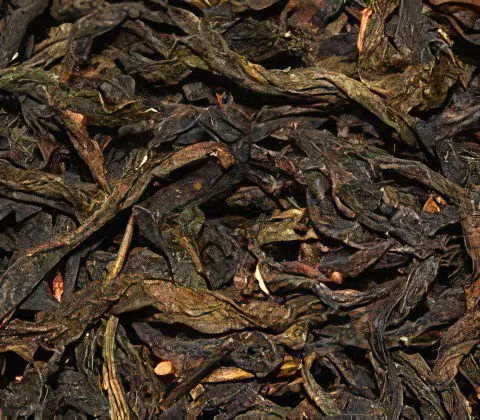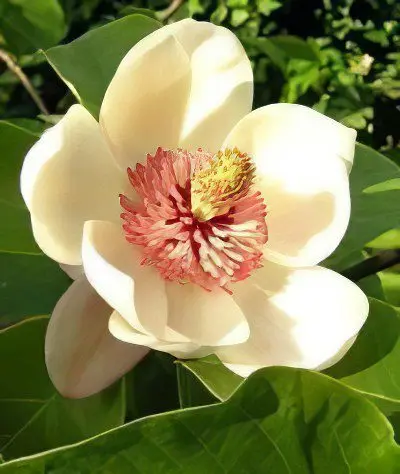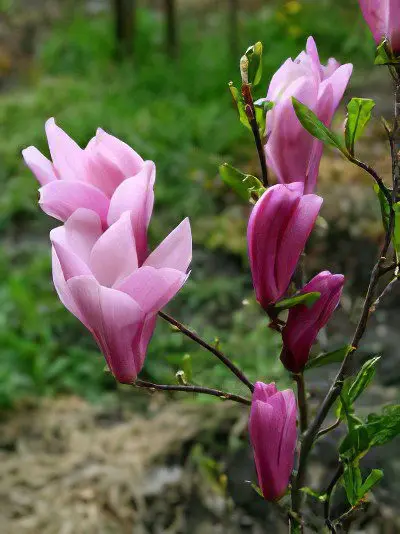Contents
- Useful properties and application of magnolia
- Botanical characteristics of magnolia grandiflora
- Useful properties of magnolia
- The use of magnolia
- magnolia oil
- magnolia flowers
- magnolia seeds
- magnolia extract
- Growing Magnolia
- magnolia white
- magnolia grandiflora
- magnolia black
- Magnolia star
- Magnolia Cobus
- Magnolia obovate
- Magnolia holly
- Contraindications to the use of magnolia
Useful properties and application of magnolia
Botanical characteristics of magnolia grandiflora

Magnolia large-flowered is a delightful evergreen shrub that grows in the Crimea and on the Black Sea coast of the Caucasus. This plant attracts attention with large light beige flowers that have an unsurpassed pleasant aroma. This plant has a powerful trunk with smooth bark and can reach 30 m in height. The pyramidal crown of the magnolia gives good shade, as it is densely leafy.
The large leaves of the shrub have an elliptical shape. Fragrant flowers, located at the ends of the branches, can reach a diameter of 12 cm. Such an exotic plant blooms from May to the end of September. Outwardly, the fruit – a multi-leaf with rather large seeds – resembles a coniferous cone. Magnolia grandiflora is native to North America, where it thrives in damp forests and river valleys.
Useful properties of magnolia
Magnolia contains a unique essential oil, rutin, flavone glycosides, and a number of special alkaloids. The beneficial properties of this plant have long been used for health purposes. Magnolia flower tincture is recommended by folk medicine as a reliable prophylactic for high blood pressure and against asthma. The exceptional antiseptic properties of magnolia help in the fight against bacteria that cause cavities.
Magnolia began to be widely used in folk medicine not so long ago compared to other medicinal plants, but for several centuries it has proven itself in the fight against many diseases. A more detailed study of this medicinal shrub revealed many useful substances that determine its medicinal properties.
The leaves of the plant are rich in essential oils, glycosides, various minerals. They also contain rutin and alkaloids such as magnolin and magnolamine. Essential oils are also found in the flowers of the plant.
Its fruits are also highly valued for their high content of fatty oils, consisting of a whole complex of unsaturated acids: peanut, linolenic, oleic, palmitic, stearic, myristic. The bark contains a lot of magnoflorin, useful substances candicin and salicifolin are isolated from the roots. For medicinal purposes, the leaves, flowers and bark of the tree are collected.
The use of magnolia

As a rule, in folk medicine, a liquid extract of this medicinal plant is used, which has a pronounced hypotensive effect. With its help, you can stabilize blood pressure, as well as significantly reduce heart pain and restore normal heartbeat. For more than a dozen years, in the early stages of chronic hypertension, special alcohol extracts of magnolia have been used, which can significantly improve the patient’s well-being.
Tincture: 2 teaspoons of crushed seeds should be poured with one glass of ethyl alcohol (70%). After 10 days of infusion in a warm place, you can start a monthly course of treatment. To do this, take 30 drops of tincture in the process of eating at least three times a day. Moreover, such a tincture can be recommended as an external agent for rubbing the body with rheumatism.
magnolia leaf. Magnolia leaves contain iron salts, magnesium, potassium, essential oil, rutin, flavonoids, alkaloids, glycosides. Before use, the leaves must be thoroughly dried in the open air in the shade. They should be stored in well-closed containers, which are placed in a dry place.
Magnolia fruit. In folk medicine, magnolia fruits are often used for diseases of the digestive system, as well as an effective remedy for rheumatism.
magnolia flowers. The main purpose of medicines based on the flowers of this plant is to normalize pressure and improve well-being. The essential oil contained in magnolia flowers is successfully used in cosmetology to quickly strengthen hair.
Bark magnolias. It is magnolia bark that is excellent for chills and fever. In addition, it has a tonic effect in gastritis, colitis and myasthenia gravis. Also, the bark of this plant is often used as a stimulant with a rather weak labor activity.
The plant is widely used in pharmacology, its various parts are part of many tonic, stimulating and restorative medicines. Medicines based on it can reduce pain in the cardiac region and slow down the heart rate. In addition, they lower blood pressure, which in turn leads to an improvement in the general condition of the whole organism.
Folk medicine in many countries of the world notes the tincture of leaves of magnolia grandiflora as an effective antihypertensive agent that has an antispasmodic effect on human smooth muscles. Among other things, the use of such a tincture will be useful in the early stages of hypertension. Chinese healers have long used the bark of the tree to treat gastritis, myasthenia gravis, spastic colitis, and labor problems.
The plant has a good antiseptic effect and is able to destroy microbes that cause caries, reliably protecting the oral cavity from inflammation. Tinctures of this medicinal plant have long been recommended for the prevention of asthma, the normalization of blood pressure and the elimination of rheumatic pain. They were also used as an antipyretic for fever. It is worth noting that the study of the beneficial properties of this amazing tree does not stop with official science to this day.
Tincture: the seeds, bark and fruits of the tree must be insisted on alcohol for twenty days, then filtered and taken 4 times a day, 10-20 drops of tincture (diluted with water) as an anti-febrile and cardiac tonic agent. Such a tincture in combination with other herbs can be used externally for rheumatism.
magnolia oil
The essential oil is obtained from the flowers and leaves of the tree by steam distillation. The production technology is not so simple, so the product is expensive. At the same time, magnolia oils are unusually soft, light and fragrant. It is an indispensable component of expensive exquisite perfumes.
The oil is widely used in folk medicine to combat respiratory diseases, it is effective in the form of inhalation for colds and severe coughs. If you use oil during a massage, it helps to relieve the manifestations of rheumatism and reduces pain in the joints. Due to its beneficial effect on the skin, this drug is part of the preparation of many tonic creams and lotions.
It helps to effectively cope with acne, eliminates skin pigmentation, eliminates dark spots on the face and removes inflammation. Some experts note the pleasant tonic aroma of magnolia oil, which helps to relax the body and nervous system.
magnolia flowers

The flowers of the tree are unusually beautiful, fragrant and elegant. The graceful shape of the glass with a pestle inside makes them an indispensable decorative element for decorating gardens and plots.
Traditional medicine in many countries of the world advises the use of plant flowers as an easy prophylactic for asthma. Their main medicinal effect is to normalize pressure and improve the general well-being of a person. Flower tinctures are often used in the fight against baldness and to strengthen hair. The healing properties of medicines are in the high content of essential oils and other useful components.
magnolia seeds
Magnolia seeds are a fairly common medicinal product. They have previously been successfully used by Chinese folk healers to cure patients of pulmonary diseases, as well as to strengthen the heart. From the seeds of this medicinal plant, a tincture is made that has a positive effect on the human body during fever, it is also able to tone up cardiac activity. Externally, such a remedy can be used for rubbing with rheumatism.
magnolia extract
It is extracted from the seeds, bark or leaves of this medicinal plant. The extract is an indispensable component of various skin and hair care products. In folk medicine, it is used to treat hypertension in the early stages. This healing agent helps to lower blood pressure, reduce heart pain and slow the heartbeat, dilate peripheral blood vessels.
Improving the work of the heart after the use of magnolia extract is due to the presence of essential oil, alkaloids and some minerals useful to the human body. Many experts note the positive impact of this tool on the general well-being and the human immune system, although the latter assumption has not been officially confirmed.
Growing Magnolia

To easily grow magnolia, you must strictly follow a few rules. This moisture-loving plant does not like calcareous and saline soil, and it is also afraid of strong winds. When the tops of the shoots freeze, they should be cut off, and the affected branches are able to recover on their own. Magnolia is propagated by seeds or cuttings. It will thrive in sunny or shady areas. Uniform moisture should be supplemented by good drainage. In addition, regular feeding is required.
The plant is usually propagated by summer cuttings, seeds, grafting or layering. Layering is best for early summer. It should be remembered that the tree does not tolerate liming and for full development it needs spacious dishes and abundant watering. For irrigation, it is best to use soft water. Magnolia cuttings will be more successful and efficient when using growth stimulants.
It is recommended to cut green cuttings from the mother plant in the summer, after which they must be placed in a greenhouse with bottom heating of the soil. These are very photophilous plants, however, in regions with hot summers, partial shade is also suitable for their cultivation. The land for growing seedlings must be fertile and fertilized with peat. It should also be remembered that the plant develops very slowly in the first year.
Care of seedlings consists in abundant watering, mulching the soil with rotted compost or peat every spring, cutting dry or thickening branches. The frozen tops of the shoots should also be pruned, while the affected branches are restored on their own.
magnolia white
Magnolia white is a magnificent ornamental shrub that impresses with its large snow-white flowers with a unique aroma. The height of the trunk of this species can exceed 30–40 m. White magnolia blooms for three summer months. Cone-shaped fruits have a bright color, and large expressive leaves are oblong in shape.
magnolia grandiflora
Magnolia grandiflora is distinguished by a dense pyramidal crown, which is located on a high, powerful trunk. Single apical flowers have an excellent smell. Rusty-pubescent ovoid fruits in length reach 10 mm. Large-flowered magnolia is grown not only in the regions of the Krasnodar Territory, but also in Georgia and Central Asia.
magnolia black
Magnolia black is an unusual ornamental plant that has a low trunk and dark purple flowers. The dark brown or black seeds of this shrub are in a unique fleshy shell. This magnolia prefers fertile soils and grows well in sunny, windless places.
Magnolia star
The graceful star magnolia is an incredibly beautiful shrub with a rounded crown. Its height, as a rule, does not exceed 3 m. Earth-green oval leaves up to 15 cm in size are complemented by fragrant white flowers that conquer with their star-shaped petals. Large flowers can be about 10 cm in diameter. This plant blooms from late spring to early autumn.
Magnolia Cobus
The Kobus magnolia is native to Japan, where this tree reaches a height of 25 m. Obovate leaves about 8 cm long are the basis of the dense crown of the plant. Large milky flowers have a delicate aroma. The diameter of the flowers does not exceed 12 cm. Such a winter-hardy magnolia is a fairly hardy tree that is not afraid of direct sun and wind.
Magnolia obovate
Magnolia obovate is a rather rare species that grows in Japan, Russia and the Kuril Islands. The presented plant is listed in the Red Book. Such a slender tree, on average, grows no more than 8 m in height, while the trunk diameter is about half a meter. The obovate leaves are green above and bluish below. Delicate cream flowers smell great in early summer, from mid-May to early July. Dark red fruits are large – up to 17 cm.
Magnolia holly
Holly magnolia is an ornamental evergreen plant that does not grow above 2 m. Large leathery leaves are interesting for their prickly-toothed shape, which makes them look like holly leaves. The yellow flowers are numerous and have erect, branched inflorescences. Flowering occurs in May, sometimes magnolia can bloom again in October. Sweet fruits ripen by mid-August.
Contraindications to the use of magnolia
When using preparations from a plant, one should always remember that it is toxic and dangerous. Decoctions or tinctures based on it should be used only on the advice of a doctor. In some people, they can cause increased feelings of fatigue, dizziness, nausea, and headache. We must also not forget about allergies or individual intolerance. The flowers of the tree have a specific and strong aroma, the excessive concentration of which indoors can adversely affect human health.









